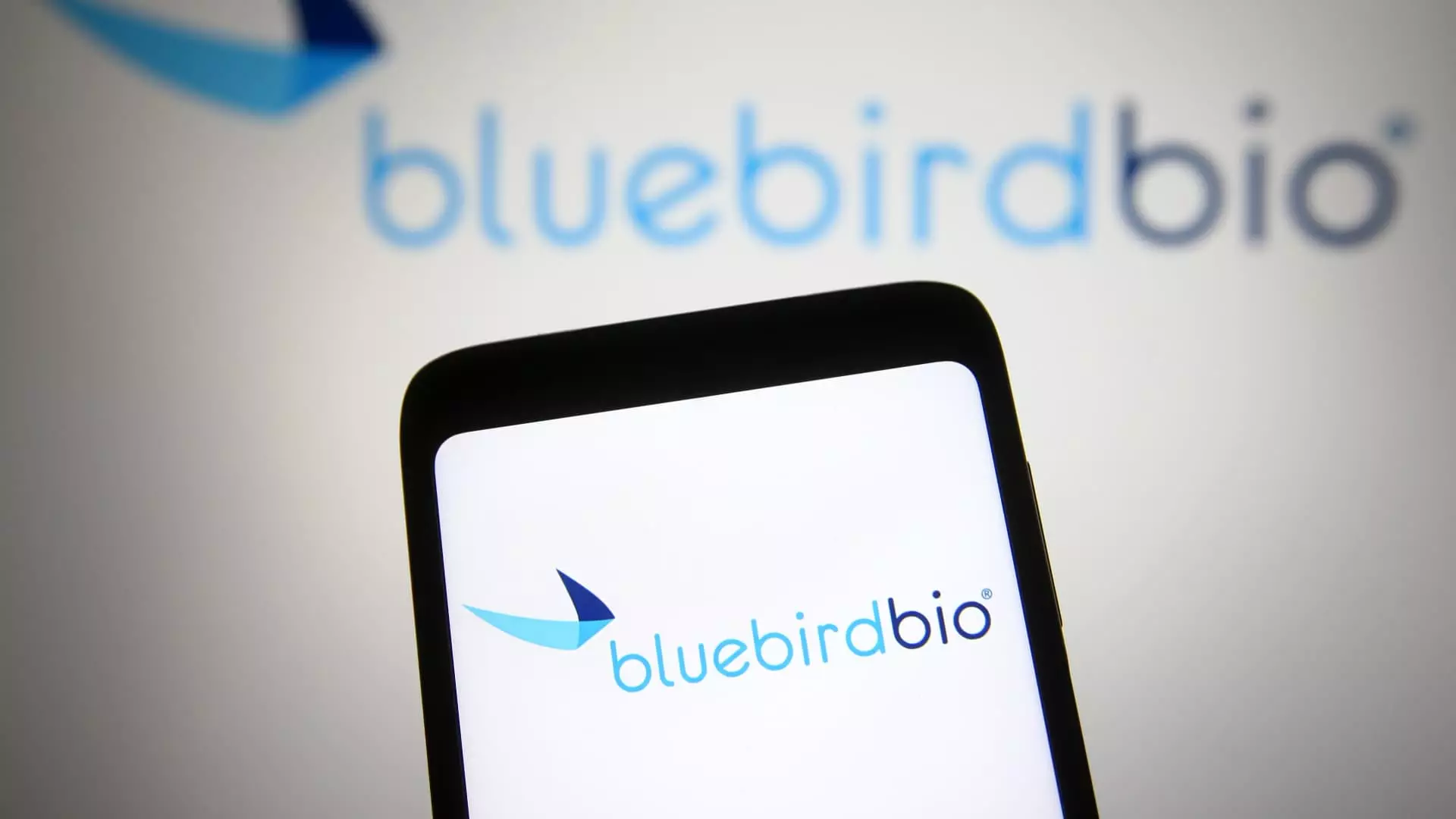Bluebird Bio, once a leading name in the biotech industry, has significantly faltered, culminating in its sale to private equity firms Carlyle and SK Capital for a mere $30 million. This transaction signals a somber chapter in the company’s narrative, which began with great promise and innovation but ultimately succumbed to an overwhelming tide of financial distress and operational challenges. The events surrounding Bluebird Bio serve as a potent reminder of the volatile nature of the biotech landscape and the vast chasm that can exist between potential and reality.
At the peak of its trajectory, Bluebird Bio boasted a market capitalization of nearly $9 billion, attracting substantial investor interest driven by its pioneering work in gene therapies aimed at treating genetic diseases. Yet, over subsequent years, the company’s financial bottom line began to unravel, leading it to today’s sale at a valuation of under $41 million. Bluebird’s stock, which once closed at $7.04, plummeted 40% following the announcement of the acquisition, encapsulating a narrative of steep decline.
The restructuring of Bluebird’s operations—most notably the spin-off of its cancer initiatives into a separate entity, 2Seventy Bio—proved detrimental to its revenue streams. With each setback, including failed therapies and adverse clinical trials, Bluebird was increasingly unable to reconcile its ambitious goals with harsh financial realities. These challenges emphasize a critical lesson for investors and companies alike: the importance of maintaining sustainable financial practices, especially in an industry notorious for its high-risk ventures.
Despite its financial woes, Bluebird Bio’s contribution to the field of gene therapy cannot be overstated. The company has been at the forefront of developing treatments that offer the prospect of genuine cures for life-altering genetic conditions, such as sickle cell disease and beta thalassemia. These therapies have not only transformed the lives of many patients but have also offered hope to their families. Individuals like a young girl who became the first in the U.S. to receive the costly Zynteglo treatment embody the tangible, positive impact of Bluebird’s innovations.
For many patients, the allure of a one-time treatment capable of curing previously untreatable diseases presents a compelling case for investing in gene therapy. However, the stark contrast between the life-saving promise of these treatments and the self-destructive trajectory of their developer raises critical questions about the sustainability of the business model underpinning the biotech sector.
Bluebird’s narrative is emblematic of broader industry challenges, particularly the struggles faced by companies aiming to commercialize novel treatments for rare diseases. The recent difficulties experienced by other players in the space, such as Vertex and Pfizer, indicate a systemic reckoning. Vertex’s competing gene therapy for sickle cell disease and Pfizer’s withdrawal from hemophilia treatment exemplify the struggle faced by many companies in translating breakthrough science into profitable ventures.
Investors and stakeholders are now compelled to reassess their expectations and recognize the complexities associated with gene therapy commercialization. As the enthusiasm surrounding gene therapies began to dim, so too did the valuations and financial health of previously promising companies. This dynamic accentuates the necessity for rigorous clinical validation, prudent financial management, and long-term planning.
As Bluebird Bio navigates its transition into this new phase under private equity ownership, the potential for a revitalization remains. There exists an opportunity to refocus and re-strategize, perhaps with an eye toward developing sustainable revenue models that could support ongoing innovation. The company’s treatments, which still possess the power to positively impact lives, beckon a second chance for both the organization and its patients.
Bluebird Bio’s journey underscores the unpredictable nature of the biotech sector and the indispensable need for operational resilience. While the company has encountered significant challenges, the hope remains that its next chapter could restore a measure of its former glory—a testament to the enduring promise of gene therapy amid a tumultuous commercial landscape.

